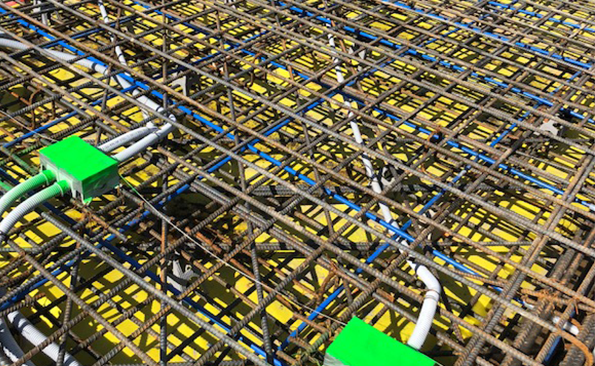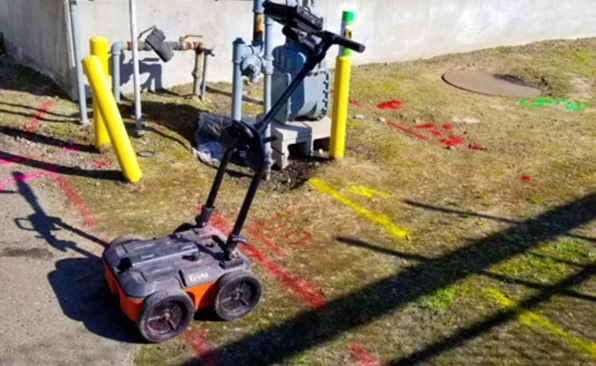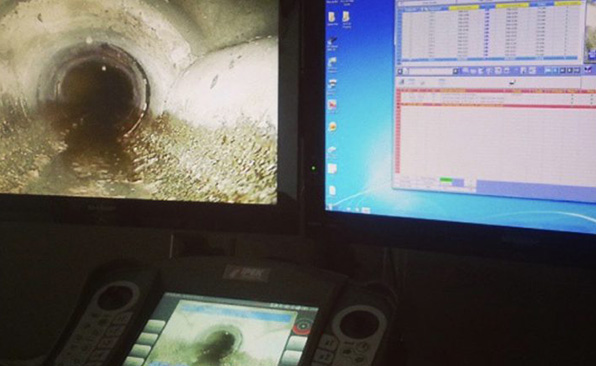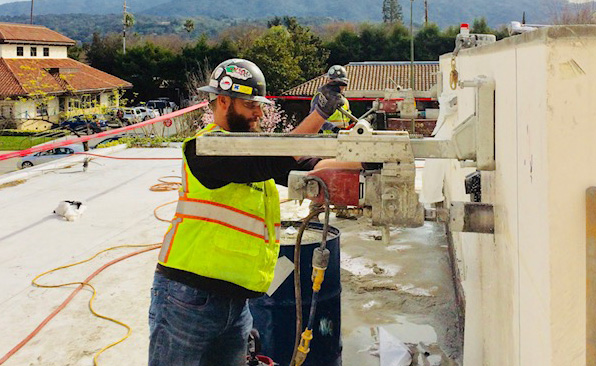Utility Locating Services
in Austin, Texas and surrounding areasUtility Locating Services Austin
You already know you need to call before you dig to avoid the risks associated with impacting or damaging Austin utilities underground. But did you know that utility companies’ buried underground utility locate services stop at the property line and only include surveying public utility lines? Many property owners don’t realize this unless it’s too late, leaving them and their contractors with an incomplete utility map and a potentially deadly job site. If your company is doing construction work in the city of Austin, Texas, you need Austin utility location services you can rely on for underground utility locating and damage prevention that makes all your excavation and construction operations as safe as possible. And that means you need Safe2Core Austin!
Private Underground Utility Line Locating Austin Can Count On
Using ground penetrating radar systems, or GPRS, Safe2Core Austin provides private utility locating services that fill in the gaps left by the various utility company locating services. Using the data from the GPR in conjunction with the public utility map and previous construction documentation, Safe2Core Austin can help your construction company’s work crews quickly and easily identify the existing underground utilities on your job site for subsurface utility engineering, as well as location and damage prevention to maximize efficiency and safety.
Safe2Core Austin’s underground utility line locating service is great for all major Austin private utilities, including:
- Electric lines
- Gas lines
- Phone and fiber optic cable lines
- Sewer lines
- Traffic control
- Underground facilities
- Water lines
- And more!
Imagine if you didn’t have to worry about property damage or project shutdowns because an excavator operator clipped a gas line or needing to pay for the associated damages that can follow from damaging underground utility services. Safe2Core Austin technicians are trained to locate and mark the utility line’s location and approximate depth, so everyone on your crew will know what lies below and where to find it.
And unlike many other underground utility locating companies, Safe2Core Austin also offers a complete suite of inspection and nondestructive testing options to make your job site work smoothly and with dispatch, including:
CCTV pipe inspections
Concrete cutting, coring, drilling, sawing, and wire cutting
GPR concrete scanning
Leak detection
Sewer inspection
Sewer line video inspection
Vacuum excavation
X-ray concrete scans
And more!
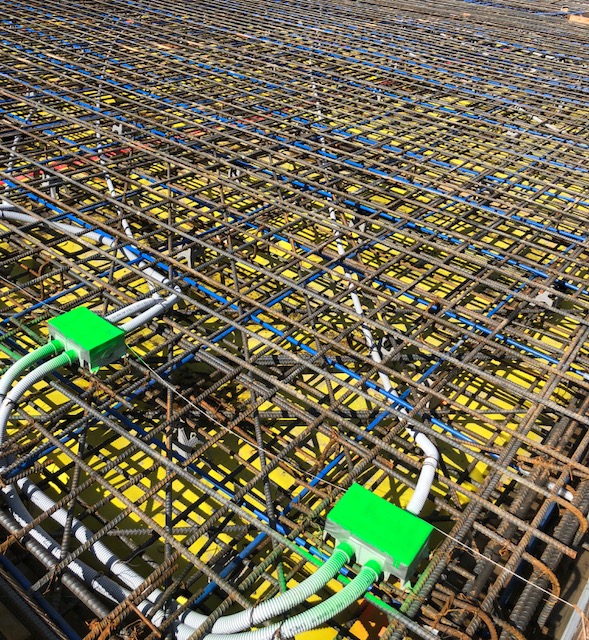
Don’t gamble the safety of your crew or your bottom line on one-trick underground utility locators!
Bring in an underground utility locating company that offers and can deliver more. Safe2Core Austin has an unparalleled reputation for speed, efficiency, and accuracy that’s second to none among underground locators, so you can get underground utility location services that are completely aboveboard.
To find out more about our underground services or to get a free estimate for your project, click here to contact Safe2Core Austin through our website.
And to learn more about underground utility line locating, keep reading for our answers to FAQs from contractors and engineers just like you!
For the last few decades X-RAY technology was the predominant technique used to locate and identify targets embedded in concrete. Concrete Scanning using Ground Penetrating Radar (GPR) has overtaken X-RAY technology as the most efficient process to be used when trying to locate rebar, post-tension cables, conduits, etc. in concrete prior to concrete cutting or any other destructive procedures. However, Concrete X-RAY technology is still useful in some rare cases. Our staff has more than 15 years of ASNT Level III X-RAY NDT experience and we have managed numerous complex Concrete X-ray inspections.
Our technicians will oversee Concrete X-ray projects from beginning to end, escorting and assisting the X-ray crew in in all stages of the inspection process. Our staff will insure that all safety measures are taken to avoid harmful radioactive exposure, as well as direct the X-ray crew to the specific locations that need to be inspected. Our technicians will collect and interpret all X-ray film produced and deliver to our customers clear inspection results in order to avoid damaging any embedded targets during concrete cutting.
Frequently Asked Questions about Utility Locating Services Austin
Locating underground lines can be a frustrating and scary effort—but Safe2Core Austin’s utility locating service makes underground service line locating and identification safer and easier than ever before!
Question: Why do I need a private locator service? Isn’t that what 811 is for? –Colby, Austin, TX
Answer: When you call 811, the utility service companies send out locator service crews to locate underground utilities in the area—but only in the public right-of-way! These locates are great for giving you a starting point for where the utility lines cross the property line, but after that, you’re on your own. This “Your property, your problem” approach means contractors have to exercise more care and caution when they go to service underground utility lines on the job site because if you impinge upon or damage a line, regardless of the location or reason, it could cost you a lot of money to repair or even create a dangerous situation for your crew and the public. This is why you need an experienced, skilled, professional underground utility locating service like Safe2Core Austin on your job site, so you can drill and dig with confidence!
Question: I’ve heard there are some materials that GPR can’t pick up on. Is this true? –Bruno, Austin, TX
Answer: This is a throwback to the days when metal detecting was the primary method of identifying and locating lines on construction sites. One of the limitations of using a metal detector is that it can’t detect PVC pipe, terra cotta, or similar materials. Unlike clay or copper pipe, electrical, and conventional gas lines, PVC’s absorption characteristics mean it doesn’t stand out from the surrounding material.
To work around this, modern construction practices require that underground PVC lines be marked with either a guide wire or reflective, brightly colored contractor type that identifies the type of line, typically about one lift or foot of compacted material above the line bed.
However, this practice wasn’t standardized until the early 2000s, which means if you’re dealing with a site where the last major construction activity was in the late 1970s, there’s a risk that water and sewer lines could go undetected.
Today’s ground penetrating radar systems are perfectly capable of locating PVC pipes, especially ones with a wide profile.
Safe2Core Austin uses existing site documentation, such as architectural drawings, initial site plans, and “as-builts,” in conjunction with the location data generated by the GPR scanner to determine what type of underground utility lines are present in a given area.
In some cases, exploratory potholing may be necessary to confirm the location, direction, and depth of the lines. However, when it comes to safe, effective, efficient underground utility location and identification, GPR is the gold standard and likely will be for decades to come!
Question: Can a GPR system tell what kind of underground lines it’s detecting? –Silvio, Austin, TX
Answer: A GPR system is both very sophisticated in the amount of data it can generate and somewhat unsophisticated in that it can tell you that “something” is there and give you an idea of its characteristics, but not exactly what it is.
GPR scanning technology is always evolving, and there’s a good chance that someday a GPR scanner will be able to positively and accurately identify not only the location of underground anomalies but the composition and most likely use for them.
For now, however, GPR is only a tool. It requires human eyes and a trained human mind, along with other site documents, to determine what the GPR system is picking up. Metallic lines such as buried cable will necessarily have a stronger signal return and thus offer a better picture of what’s under the surface than PVC or, on seriously old sites, clay pipe. A skilled operator like Safe2Core’s technicians will note a stronger return and be able to say, “This is most likely a power line” or “This is probably a sewer line.” By comparing the precise GPS coordinates generated by the scanner with historical documents from the site, such as as-built drawings, we can typically identify exactly what kind of lines you’re dealing with and mark them so your crews can work around or access these lines faster and more safely!
Question: How much does underground utility locating from Safe2Core cost? –Wyllis, Austin, TX
Answer: The short answer is, “It depends.” To be more precise, it will depend on the size of the site, how much historical data is available about the site, and other factors. Safe2Core Austin has built our reputation on working as quickly as possible without compromising accuracy or safety in doing so.
The advantage to our underground private locator services is that when we’re done, you will have a comprehensive map of the existing underground lines and structures, complete with precise GPS coordinates.
This data will help you plan your excavation and utility engineering operations with minimum downtime and maximum safety for your crew and the general public.
Safe2Core Austin guarantees the accuracy of our scanning work so you and your crew can work confidently because you know exactly what’s waiting under the surface and where to find it.
That’s why Safe2Core Austin is the first name and last word in safe, secure, accurate utility locating services Austin contractors know and trust!

